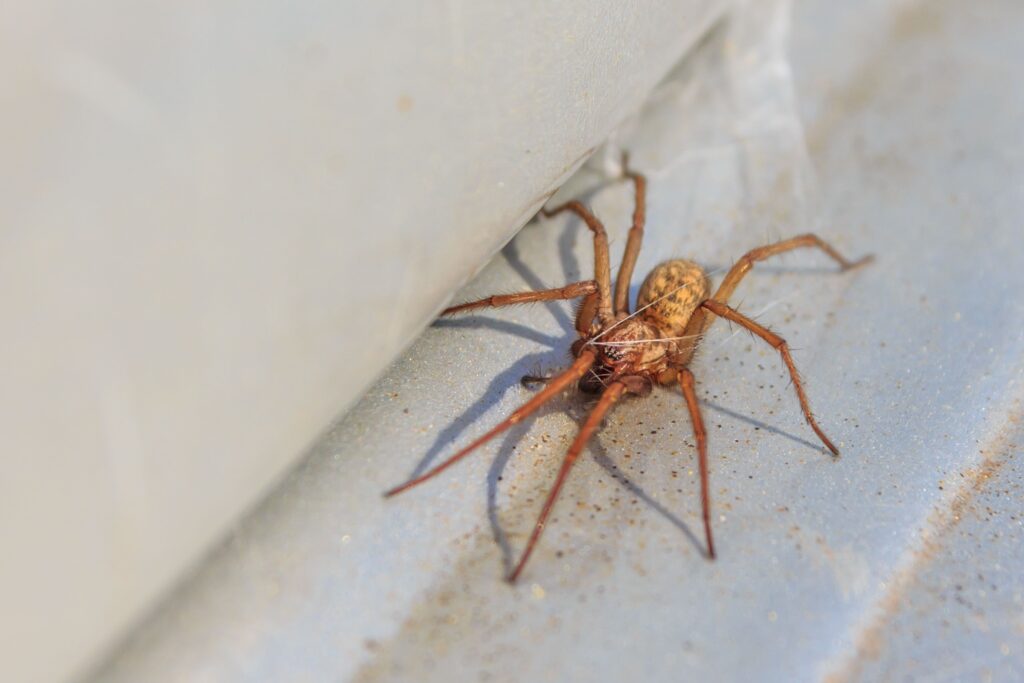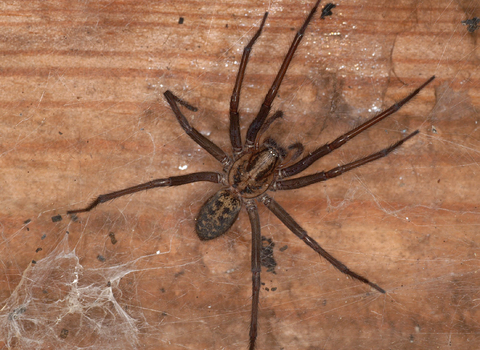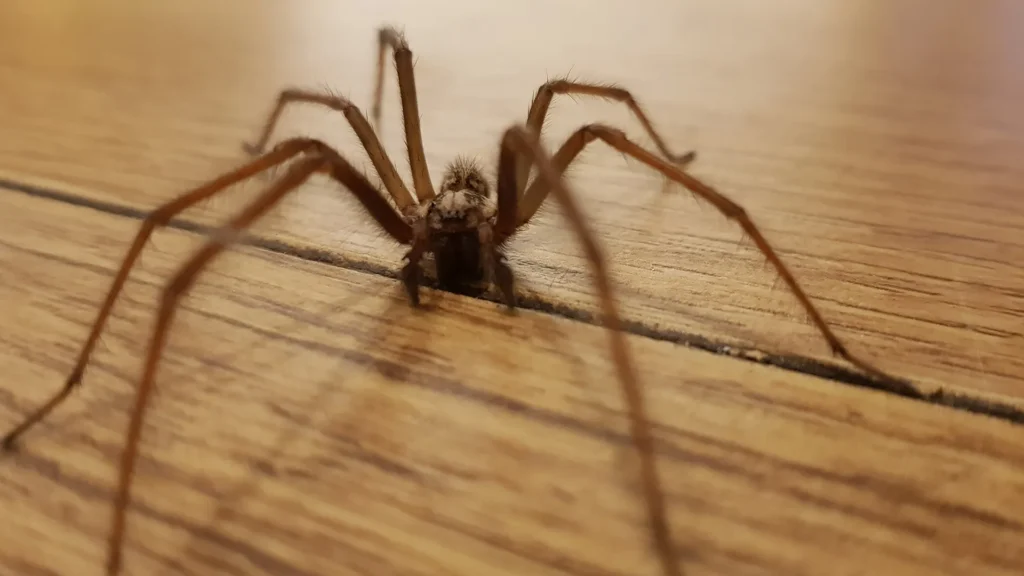Spider Removal Services by Pest Control Xperts in Chowchilla
Serving homes, apartments, dormitories, hotels, and healthcare offices throughout Chowchilla, Le Grand, Planada, Dos Palos, South Dos Palos, Firebaugh, California, and Surrounding Areas
Professional Spider Control for Chowchilla, Le Grand, Planada, Dos Palos, South Dos Palos, & Firebaugh, California
Are you tired of the endless battle against spiders in your Chowchilla, Le Grand, Planada, Dos Palos, South Dos Palos, or Firebaugh home or business? Do those store-bought sprays offer only fleeting relief, leaving you to discover new webs and scurrying invaders just days later? You are not alone. Many property owners in California’s Central Valley experience the frustration of a persistent spider problem, often because DIY methods only scratch the surface of a much larger, hidden issue. At Chowchilla Pest Control Experts, we understand that true spider elimination goes beyond visible pests. It means targeting the source, the queen, and the entire colony, ensuring those temporary “illusions undone by” the hidden colony are replaced with lasting peace of mind.
Why Spiders Appear in Chowchilla and Surrounding Communities
The unique climate and geography of Chowchilla, Le Grand, Planada, Dos Palos, South Dos Palos, and Firebaugh, located within California’s Central Valley, create an ideal environment for various spider species to thrive. Our region experiences hot, dry summers and cool, moist winters. These seasonal shifts often drive spiders indoors seeking shelter, warmth, moisture, and food sources. The proximity to agricultural areas, rivers, and natural open spaces means that spiders are constantly looking for new habitats, and our homes and businesses provide ample opportunity.
- Climate Factors: The intense heat of Central Valley summers pushes spiders to seek cooler, moister environments inside homes and businesses. Conversely, the cooler, sometimes foggy winters drive them indoors in search of warmth. These seasonal migrations lead to increased spider sightings indoors.
- Geographical Features: Areas near the San Joaquin River and its tributaries, as well as irrigation canals prevalent throughout these agricultural communities, contribute to higher moisture levels. This moisture attracts a variety of insects, which in turn provides a consistent food source for spiders. The flat valley terrain, interspersed with agricultural fields, offers numerous hidden spots for nests and ample opportunities for spiders to move between outdoor and indoor environments.
- Local Architecture: Common architectural styles in these communities, ranging from older wooden homes with crawl spaces and basements to newer suburban developments, offer numerous entry points and hiding spots. Foundation cracks, gaps around windows and doors, unsealed eaves, and even utility penetrations are invitations for spiders. Dense commercial districts and agricultural buildings can also provide abundant harborage and food sources.
- Neighboring Properties & Agricultural Influence: Infestations often spread from adjacent properties, especially in more densely populated areas or commercial zones. Furthermore, the extensive agricultural landscape means that pest populations from fields can migrate into residential and commercial areas, bringing their spider predators with them.
Types of Spiders Commonly Found in California’s Central Valley
California is home to a diverse range of spider species, some of which are more common household pests than others. Understanding the types you might encounter is the first step toward effective spider control.
Western Black Widow Spider
- Identification: Shiny black body, with the female typically having a distinctive red hourglass marking on the underside of her abdomen. Males are smaller and lighter in color.
- Behavior: Prefer dark, undisturbed areas like woodpiles, sheds, garages, crawl spaces, and cluttered areas. Their webs are irregular, strong, and messy.
- Risks: Their venom is neurotoxic and can cause severe pain, muscle cramps, nausea, and in rare cases, more serious complications, especially for children and the elderly.
Brown Widow Spider
- Identification: Typically light brown to gray with an orange or yellow hourglass marking on the underside of the abdomen. Their egg sacs are spiky, resembling a “caltrop” or “sea mine.”
- Behavior: Often found in similar outdoor locations as black widows, but also common in outdoor furniture, planters, and under eaves.
- Risks: Their venom is less potent than the black widow’s, but a bite can still cause discomfort and localized pain.
Wolf Spider
- Identification: Robust, hairy, and often mistaken for small tarantulas due to their size and speed. They are typically brown or gray with dark markings.
- Behavior: Active hunters, preferring to stalk and pounce on their prey rather than building webs. You will often find them on the ground, in leaf litter, or around foundations.
- Risks: While their bite is not considered dangerous, it can be painful and cause redness and swelling.
Orb Weaver Spider
- Identification: Famous for their intricate, circular, wheel-shaped webs, often seen glistening in gardens, fields, and between structures. They come in various sizes and colors.
- Behavior: Generally harmless to humans and are beneficial for controlling insect populations. They rely on web vibrations to detect prey.
- Risks: Not considered dangerous to humans.
Yellow Sac Spider
- Identification: Small, pale yellow spiders with a slightly darker stripe on their abdomen.
- Behavior: They do not build large webs but instead spin small silken sacs in corners of ceilings, walls, or behind furniture, where they hide during the day.
- Risks: Their bites are often mistaken for other insect bites and can cause localized pain, redness, and sometimes a small lesion.
Cellar Spider (Daddy Longlegs)
- Identification: Recognizable by their extremely long, thin legs and small bodies.
- Behavior: They build loose, irregular webs in damp, dark areas like basements, cellars, and crawl spaces. They are known to prey on other spiders.
- Risks: Generally harmless to humans.
Pavement Spiders
- Identification: Small, dark brown to black spiders with pale legs.
- Behavior: Often found outdoors under rocks, logs, and debris, but can enter homes through cracks and gaps. They build small, sheet-like webs.
- Risks: Their bites are generally harmless, causing only minor irritation.
Odorous House Spiders
- Identification: Small, dark brown to black spiders. When crushed, they emit a distinct, unpleasant odor.
- Behavior: Common indoors, often found in kitchens and bathrooms, seeking moisture. They build irregular, tangled webs.
- Risks: Not considered dangerous to humans.
Pharaoh Spiders
While “Pharaoh Spider” is not a recognized common name for a specific spider species, it is possible the user is referring to a spider found in their home that they associate with a “pharaoh” or ancient Egyptian theme, perhaps due to markings or color. It could also be a misidentification of another common household spider. A professional inspection is crucial for accurate identification and effective treatment.
Carpenter Spiders
While not a formally recognized species name, the term “carpenter spider” might refer to spiders found in wooden structures, often associated with moisture-damaged wood. These could include various species seeking shelter or hunting insects attracted to decaying wood. The presence of such spiders can indicate underlying moisture issues or other wood-destroying insect activity, making professional inspection crucial.
Problems Spiders Create for Homes and Businesses
An unchecked spider infestation can lead to more than just an unsightly nuisance. For property owners in Chowchilla, Le Grand, Planada, Dos Palos, South Dos Palos, and Firebaugh, spiders can pose several significant problems:
- Unsettling Presence: The constant sight of webs and spiders can create an uncomfortable and unwelcoming environment for residents, customers, or employees.
- Potential for Bites: While most spiders are not aggressive, some, like black and brown widows, can deliver venomous bites that cause pain, discomfort, and in rare cases, more severe reactions.
- Indicator of Other Pests: A thriving spider population often signifies an underlying insect problem, as spiders are attracted to areas with abundant food sources.
- Web Accumulation: Extensive webbing can make a property appear dirty and neglected, impacting its aesthetic appeal and potentially deterring visitors or clients.
- Allergic Reactions: For some individuals, spider bites or even contact with spider silk can trigger allergic reactions.
Signs of an Escalating Spider Infestation
Recognizing the early signs of a growing spider problem is key to addressing it effectively. If you observe any of the following in your Chowchilla, Le Grand, Planada, Dos Palos, South Dos Palos, or Firebaugh property, it is time to consider professional intervention:
- Increased Sightings: Regularly encountering spiders, especially in multiple areas of your home or business.
- Abundant Webbing: A noticeable increase in the number and size of spider webs, particularly in undisturbed areas like corners, eaves, and basements.
- Egg Sacs: Discovering small, silken egg sacs, which indicate active breeding and a growing population. These can vary in appearance depending on the species.
- Consistent Trails: For some ground-dwelling spiders, you might notice consistent pathways or tunnels they use to move around.
- Presence of Prey Insects: A high number of other insects, such as flies, mosquitoes, or small beetles, can attract spiders looking for food.
Why Professional Extermination is Essential for Spider Removal
You have tried the sprays, the traps, and the endless sweeping of webs. Yet, the spiders persist. This is the frustrating reality for many Central Valley property owners, and it highlights a critical truth: DIY spider control methods are often temporary “illusions undone by” the hidden colony. Here is why professional intervention is the only true solution:
- Surface-Level Treatment: Store-bought products typically only kill the spiders you see, the foragers. They do not penetrate to the hidden nests or eliminate the queen, who is continuously producing new generations.
- Colony Budding: Some spider species, when faced with ineffective treatments, may respond by “budding,” where satellite colonies split off from the main nest, effectively spreading the infestation to new areas of your property.
- Resistance: Over time, spiders can develop resistance to commonly used pesticides, making DIY treatments even less effective.
- Hidden Nests: Spiders are masters of concealment, building nests in cracks, crevices, wall voids, and other inaccessible areas that DIY methods simply cannot reach.
- Identifying Species: Different spider species require different treatment approaches. A professional can accurately identify the type of spider and tailor a strategy for maximum effectiveness.
- Complete Colony Destruction: Our professional spider treatment focuses on eliminating the entire colony, including the queen and her eggs, ensuring a lasting solution rather than temporary relief. We target the source of the problem, not just the symptoms.
Our Spider Removal Method
At Chowchilla Pest Control Experts, we employ a comprehensive, multi-step approach to spider control that is designed for maximum effectiveness and long-term results. Our method is tailored to the specific needs of your Chowchilla, Le Grand, Planada, Dos Palos, South Dos Palos, or Firebaugh property and the type of spider infestation you are facing.
- Thorough Inspection & Consultation: We begin with a detailed inspection of your property, both inside and out. Our experts will identify the spider species, locate nesting sites, determine entry points, and assess the extent of the infestation. We will discuss our findings with you and answer any questions you may have.
- Customized Treatment Plan: Based on our inspection, we develop a customized treatment plan. This may include a combination of targeted treatments, such as exterior perimeter treatments, interior crack and crevice applications, and the strategic placement of spider baiting systems. Our goal is to eliminate existing spiders and prevent future infestations.
- Exclusion & Maintenance Recommendations: We will provide recommendations for exclusion techniques to seal off entry points and make your property less inviting to spiders. This might include sealing cracks, repairing screens, and improving ventilation. We also offer ongoing maintenance plans to ensure your property remains spider-free.
- Monitoring & Follow-Up: Our service does not end with the initial treatment. We monitor the effectiveness of our methods and provide follow-up visits as needed to ensure the infestation is completely eradicated and to address any new activity. Our commitment is to your ongoing peace of mind.
Why Chowchilla Relies on Chowchilla Pest Control Experts
When it comes to spider control in Chowchilla, Le Grand, Planada, Dos Palos, South Dos Palos, and Firebaugh, property owners turn to Chowchilla Pest Control Experts for our deep regional familiarity and unwavering commitment to effective solutions. We understand the specific challenges that local climate, geography, and architecture present, allowing us to implement targeted strategies that truly work. Our focus is always on complete colony destruction, not just temporary fixes, ensuring that the queen and nest are eliminated for lasting relief. We use safe application methods, prioritizing the well-being of your family, pets, and the environment. Our dedication to thorough follow-up means we stand by our work, ensuring your property remains free from spiders. We are not just exterminators, we are your partners in creating a comfortable, spider-free environment.
If you are ready to put an end to the frustration of a persistent spider problem, it is time to call in the professionals. Do not let temporary “illusions undone by” the hidden colony continue to disrupt your peace of mind. Chowchilla Pest Control Experts offers the definitive solution for lasting spider removal, ensuring your home or business is protected from the ground up. Contact us for an immediate consultation and reclaim your space today.
Our service area includes Chowchilla, Le Grand, Planada, Dos Palos, South Dos Palos, Firebaugh, and the following zip codes: 93610, 93635, 93663, 93624, 93660, 93622.





